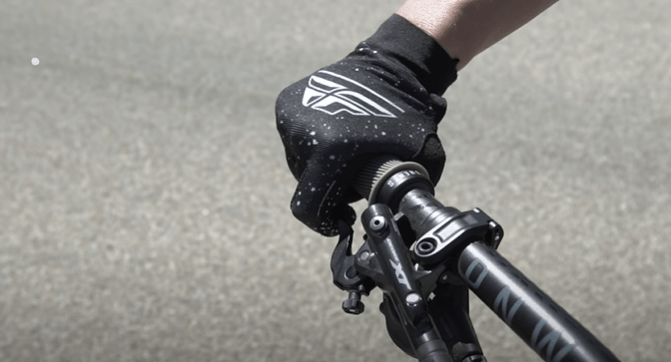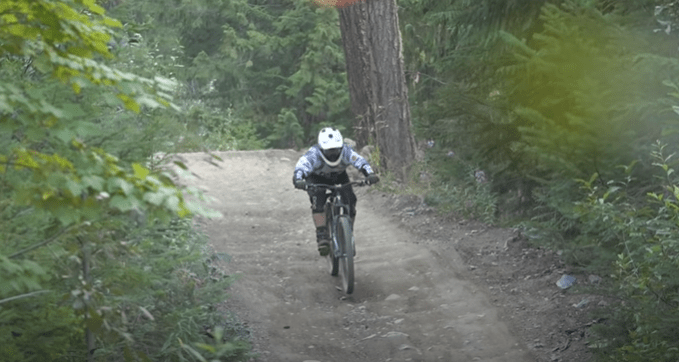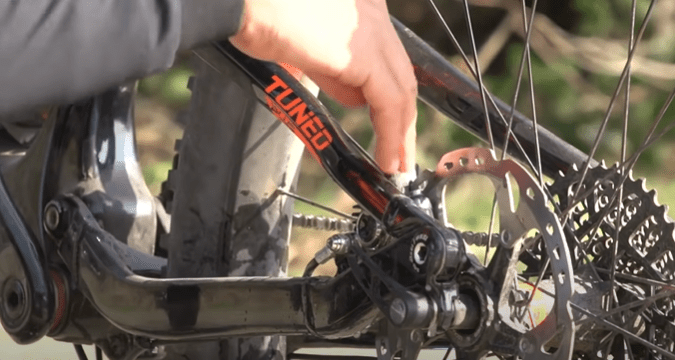

Mountain biking requires reliable brakes, which are among the most critical components of a bike, along with the transmission and tires. Innovations such as disc brakes were first tested on mountain bikes and later extended to other cycling modalities.
Investing in high-quality brakes is essential for optimal performance and safety. If you need to cut costs, it is better to do so on less crucial components such as wheel material, peripherals, or accessories.
Knowing how to use your brakes correctly is also essential for safe and efficient riding. You must understand when to brake hard, how to approach braking on descents, and how to use your front brake correctly. Mastering braking techniques can help you improve your performance on demanding trails while avoiding accidents.
By prioritizing good brakes and mastering braking techniques, you can maximize your mountain biking experience and stay safe while riding.


Properly positioning your brake levers is crucial before mastering braking techniques. The levers should be angled below the handlebar, allowing for a straight line from the forearm to the fingers. Additionally, the reach of the lever must be adjusted by regulating the distance between the grip and lever using a quick-adjust wheel or nut.
Ensure that the lever is anchored in a position that allows for comfortable braking without straining the fingers or wrist. This adjustment can be made in two steps, as detailed in this article.
By correctly positioning your brake levers, you can ensure efficient and comfortable braking, which is essential for safe and effective mountain biking.
Properly adjusting the position and angle of your brake lever is crucial for applying the brake with greater force and precision, allowing you to modulate the power according to the terrain. The rear brake plays a key role in controlling the bike’s movement and regulating speed.
It is important to remember that the rear brake should be used primarily for control rather than stopping the bike abruptly. Avoid skidding by using the rear brake in a controlled manner. This brake is crucial for controlling the line in curves, reducing speed before obstacles, and navigating jumps. Therefore, it should be used as the control brake rather than the primary braking mechanism.
By mastering the use of the rear brake, you can improve your overall control and maneuverability while mountain biking, leading to a safer and more enjoyable experience.
The front brake is more powerful than the rear brake and is responsible for stopping the bike definitively, acting as a safety brake. However, it is less progressive and more abrupt than the rear brake, and therefore, caution must be exercised when using it.
To prevent accidents, the front brake should be applied gently and progressively, avoiding sudden or forceful movements that can cause the front wheel to lock up and lead to a fall. Additionally, it is essential to be cautious when using the front brake on slippery or muddy terrain.
One of the main uses of the front brake is controlling the bike’s strong inertia during descents to prevent losing control and veering off the line or path. Therefore, it should always be applied gradually, from low to high, to prevent accidents and ensure a safe and enjoyable mountain biking experience.


It’s important not to overuse the brakes on your mountain bike as the bike’s design and geometry are intended to help control the cyclist’s movement and handling. In steep or difficult descents, it’s best to brake before reaching the section and then release the brakes to allow the bike to do its job and navigate the obstacle.
Here are some other situations in which you should avoid using your mountain bike brakes:
Brake before entering the curve and only use the rear brake if you feel you have deviated from the line. In exceptional cases, use the front brake gently but avoid overshooting. Leaning your body is more important for guiding the bike on the correct line.
Always brake before passing over roots, rocks, or other similar obstacles. Use the rear brake to slow down and adapt your speed to the passage of the obstacle. Never stop in the middle of the obstacle, as this could cause both wheels to skid and throw the bike out of control.
Moderate your speed and pedal smoothly when passing through rivers or streams. Don’t brake in the middle of the water or stop in front of a riverbed.
Brake moderately before the section and guide the bike to the side with less sand. Firmly grasp the handlebar and form a groove to overcome the sandbank quickly and without losing control. Avoid sudden braking in the middle of a sandbank, which can cause you to get stuck or slip and fall.
Improper use of the brakes is a leading cause of mountain bike accidents, accounting for about 80% of falls. Poor braking techniques such as late braking in corners, sudden braking in the middle of obstacles, or excessive use of the front brake can cause serious accidents.
In addition to accidents, excessive use of the brakes can also lead to premature tire wear and misalignment of brake tension. Disc brakes can also overheat and lose stopping power if not properly used, causing the brake pads to wear out faster.


Regular maintenance and inspection of the brakes on your mountain bike is crucial to ensure optimal performance and prevent accidents. It’s recommended to visually inspect the most important brake parts such as levers, cables, covers, pads, and discs on a monthly basis.
If you notice a decrease in braking power or the lever feels spongy, it may be due to improper cable tension in mechanical brakes or a need for brake fluid replacement in hydraulic systems. Purging should be done at least once a year or more frequently if you participate in more extreme MTB activities such as trail or enduro.
Knowing how and when to check your mountain bike’s brakes is essential to avoid dangerous situations and potential injuries.
